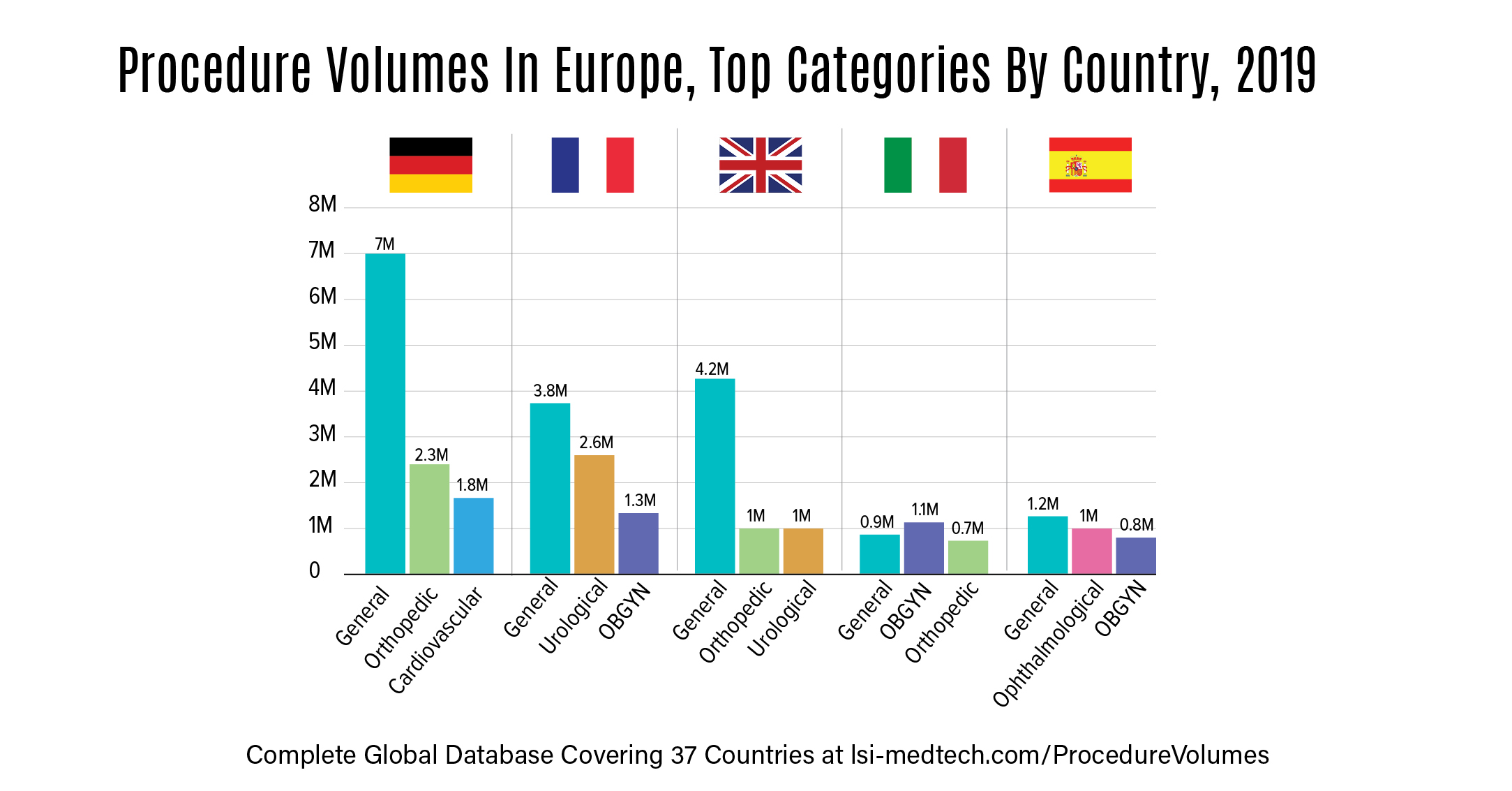Europe: Surgical Procedure Volume Trends & Opportunities

Healthcare in Europe parallels the US healthcare system in many ways. Western Europe faces significant challenges when it comes to determining how to efficiently meet the demand for more healthcare to an aging population with an increasing burden of age-related chronic diseases. Simultaneously, the issues of how to keep costs down and affordable to patients continues to test the healthcare sector in the five major European markets (France, Germany, Italy, Spain, United Kingdom). However, these problems are not unique to the five largest economies in Europe. These challenges pervade all countries within the European Union.
A report from Deloitte projects that healthcare spending in Western Europe will increase from an estimated $1,745 billion in 2017 to $2,279 billion by 2022. This 30% increase in healthcare spending can be attributed to the elderly demographic. LSI projects that by 2020, 20% of the population of the five major European nations in 2020 will be 65+.
According to 2019 estimates from LSI’s Global Procedure Volume Tracker, the top three procedure categories, by total procedure volume, in the five major European markets were:
If healthcare in Europe could be characterized by a single word, it would be uncertainty.
In 2020, medical device manufacturers will need to adapt to new regulations put in place by the EU Medical Device Regulation (EU MDR). The new regulations will emphasize the importance of clinical data, which could delay the time it takes to launch new technologies to the European market. Historically, many medtech manufacturers have pursued regulatory approval in Europe (i.e. the CE Mark) prior to seeking approval/clearance in the US. The new regulations could change the way new technologies are accepted and adopted throughout Europe, which could impact surgical procedure volumes going forward – particularly in regard to the adoption of new therapies.
There is much speculation about how the British exit (Brexit) from the EU will have on the second largest economy in Europe and the remaining EU nations.
Finally, it is unclear if the healthcare sector will be able to restrain spending and manage budgets without negatively impact the quality of care being delivered. Many European countries have attempted to tackle these challenges, without success.
Despite the many variables projecting uncertainty on the European healthcare sector, the demographic changes throughout Europe guarantee that surgical procedure volumes will continue to increase.
LSI’s Global Procedure Volume Tracker, is a part of the Medtech Pro Platform, which projects procedure volume growth for over 200 procedures, offering country-specific and global insights on trends in surgical procedures. Surgical procedure volume growth shows no signs of slowing down, as healthcare providers in developed and developing nations are tasked with meeting the increasing demand for care.
The next installment in this series will look at surgical procedure volume trends in India.








